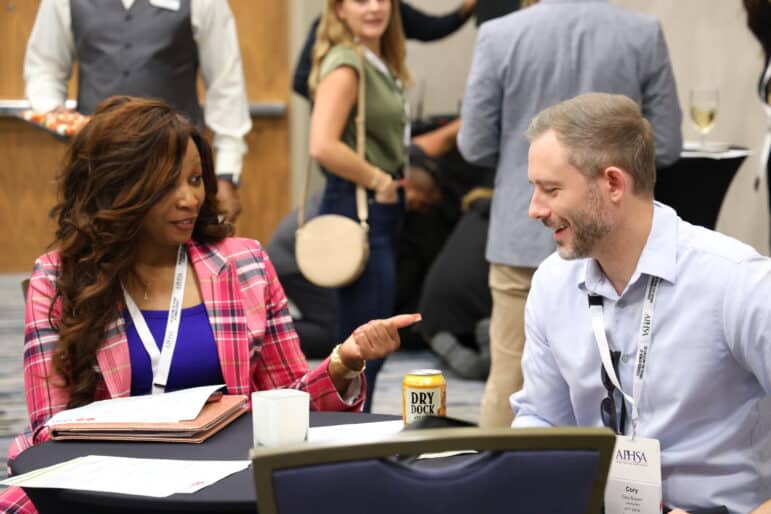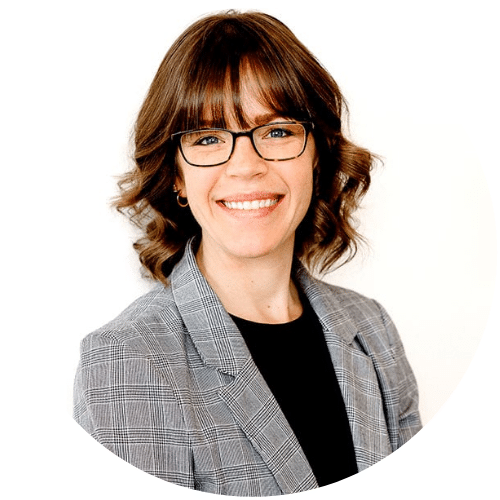Written By: Andi West

In child welfare, there’s always more work than the staff can reasonably manage, and agencies are driven by chronic underfunding. Child welfare staff are working harder than ever before and in a complex and ever-changing landscape for far less pay than their college classmates who choose private routes. For that, they should be seen heard and valued every day. Joining C!A in 2021 allowed me to bring my deep experience and empathy to helping case workers and the children and families they serve.
Discovering Diverse Perspectives
I was raised in a very suburban, mid-sized community in North Idaho. It was a great place to live, but there was very little diversity of thought or life experience. Most of my friends were “the same as me” and though I was very active in my community, it was easy to be in the mindset that everyone’s experience was the same as mine.
When I attended a four-year public university, I lived on campus and quickly met people with very different life experiences, and I had to learn quickly or get lost in the shuffle. This experience drew me to the idea of understanding people better, and I started to wonder where they were coming from, what made them work, and how I could help. After taking some psychology classes, I landed on social work. I was drawn to the humanity of social work and the foundational belief that every person has dignity, worth, and the right to express this.
Cultivating Empathy: Valuing Every Voice
My internship was in medical social work, and even though I hadn’t been exposed to child welfare in any way, they were hiring a large number of staff at one time. Like many social workers, I was bright-eyed, ambitious, and out to change the world. And throughout the first few years, those characteristics stayed with me, even when I faced large caseloads, a slow-moving court system, and internal politics that drove a wedge between what was best for kids and what was approved in legislation.
Seven of us were hired over a six-month period, so we often saw new faces. My office’s regional manager was very close to the end of his career and had seen the ups and downs of the system, which, along with some presumed burnout, made him cynical at best. After six months, he hadn’t bothered to learn my name or ask how I was doing. Instead, while walking by me one day, he simply raised his coffee cup and said, “Still here, huh? Well, good luck,” and he kept on walking.
That memory inspired and continues to inspire me to do better. When I approach every client, whether it is a director of child welfare or a newly hired staff member, I see and hear them. I remember each person’s name, carefully listen to each one, and treat them all with the dignity they deserve
Overwhelmed Systems: Child Welfare Challenges
Workers often have caseloads of 80–200 open cases, which is far beyond what’s sustainable or fair to families. For instance, in the front-end assessment, we tend to see families where children are deemed safe and no longer needing intervention, but those cases can linger as “open” because workers don’t have the time – they need to complete the compliance documentation and close the report. This means that workers’ caseloads are sky high, and though families are not involved in the system, they continue to have an open report.
“If we don’t maintain hope, then we can fall victim to the belief nothing can change — and this means nothing ever will.”
We also see increased removal rates and kids lingering in care. When workers are overwhelmed with the number of reports on their caseload, they don’t have hours to work with a family to prevent a removal. Instead, workers must make the difficult decision to remove a child for their own safety and build a plan for later down the road.
In addition, we see the cadence of children returning home turned over to the court. Instead of 12 months to permanency being the safety net we don’t go past, this becomes the standard for when a permanency decision is made, and kids who could have gone home at six or nine months might have to wait for twelve months. This is what happens when crises and new cases take precedent in an overwhelmed system.
Empowering Case Workers
One way my team and I help is by meeting workers where they are. Since we’ve done the same work, we empathize and truly understand their pain points. The work we do at C!A isn’t work that can easily happen within the system, but as consultants, we have the tools and agility to drive transformational change. We know that each client has their own unique challenges, so we identify their specific needs, goals, and barriers. We then collaborate with the people who know the work best and come up with new processes that work for everyone.
Rediscovering Joy in Child Welfare

This frees case workers to do the best practice work they hope for. They can sit with clients and call resources, hold family meetings to prevent removals, and spend extra time tracking down a resource that may be “the thing” that prevents a child from entering care. It also frees up supervisors to coach and mentor, ride along with staff, and provide the professional development that’s missed when everyone is in crisis mode. What’s also wonderful is that workers rediscover job satisfaction, kids experience better outcomes, and fewer kids unnecessarily enter foster care.
It’s been rewarding to see meaningful change in a matter of months. And one way we do that is with innovative technology like ClearPath, a system that helps case workers move families at the appropriate speed and support families with more complex needs. When you combine our business process and technology solutions, we often see caseloads dramatically reduced from 80–200 open cases to a remarkable 10–12.
In our clients who have implemented ClearPath, we have seen a 15–20% reduction in the number of children in care. For those who are doing targeted consultations for children in foster care, we have seen a reduction of 20% of kids in care. Watching states reduce their open cases, hearing case workers say, “I enjoy my job again,” or seeing fewer children enter foster care: these are outcomes that keep me inspired. A worker emailed us to say that before ClearPath, she had so much stress she would drive to work in silence, preparing to be bombarded by the day. When ClearPath made her caseload manageable, she finally had the mental space and capacity to turn on the radio and sing along. This joy and rediscovery of the love of child welfare work continues to motivate me to help.
Embracing Hope: Lessons from the Emerging Leaders Program

In 2024, I was so honored to be nominated to the Emerging Leaders Program, organized by APHSA and the Human Services Information Technology Advisory Group (HISITAG). This engaging and impactful program works to promote and strengthen collaboration among health and human services and IT professionals. The topic was hope, which is vital to those of us in human services. If we don’t maintain hope, then we can fall victim to the belief nothing can change—and this means nothing ever will.
The program included 35 of us from all over the world and blended powerful training sessions with networking opportunities. This gave me the chance to reconnect with leaders still working directly in child welfare, especially those advancing trauma-informed practices. We discussed how to create inclusive, motivational spaces for our professional clients and our workforce. When done well, this translates directly to how children and families are treated in the fragile system of child welfare.
A highlight was hearing from two incredible women who shared their leadership journeys. Their perspectives were deeply inspiring, both as women leaders and as individuals overcoming challenges to excel in their fields. I took away another very impactful reminder that my professional experience is both privileged and simply my own.
Participating in the Emerging Leaders Program and joining C!A remind me of the importance of being aware of my colleagues’ and clients’ needs, knowing I can either help or hurt—and I choose to help. It also reinforces that staying true to my core beliefs of integrity, empathy, hard work, and taking risks is essential in advancing the child welfare profession.
To learn more about how the Change & Innovation Agency (C!A®) and consultants like Andi support human services professionals, please visit changeagents.info.
About the Author

Andi West, Senior Consultant on the Child Welfare team at the Change & Innovation Agency (C!A®), reflects on her journey in child welfare, her experience with the APHSA/HSITAG Emerging Leaders Program, and the impact of C!A’s innovative solutions in addressing some of the most pressing challenges in child welfare.
Disclaimer: The views reflected in this article are those of the author and do not necessarily reflect those of Change & Innovation Agency (C!A®) or other members of C!A®. The viewpoints expressed in contributors’ posts are the authors’ own and do not necessarily reflect the policies or views of APHSA.